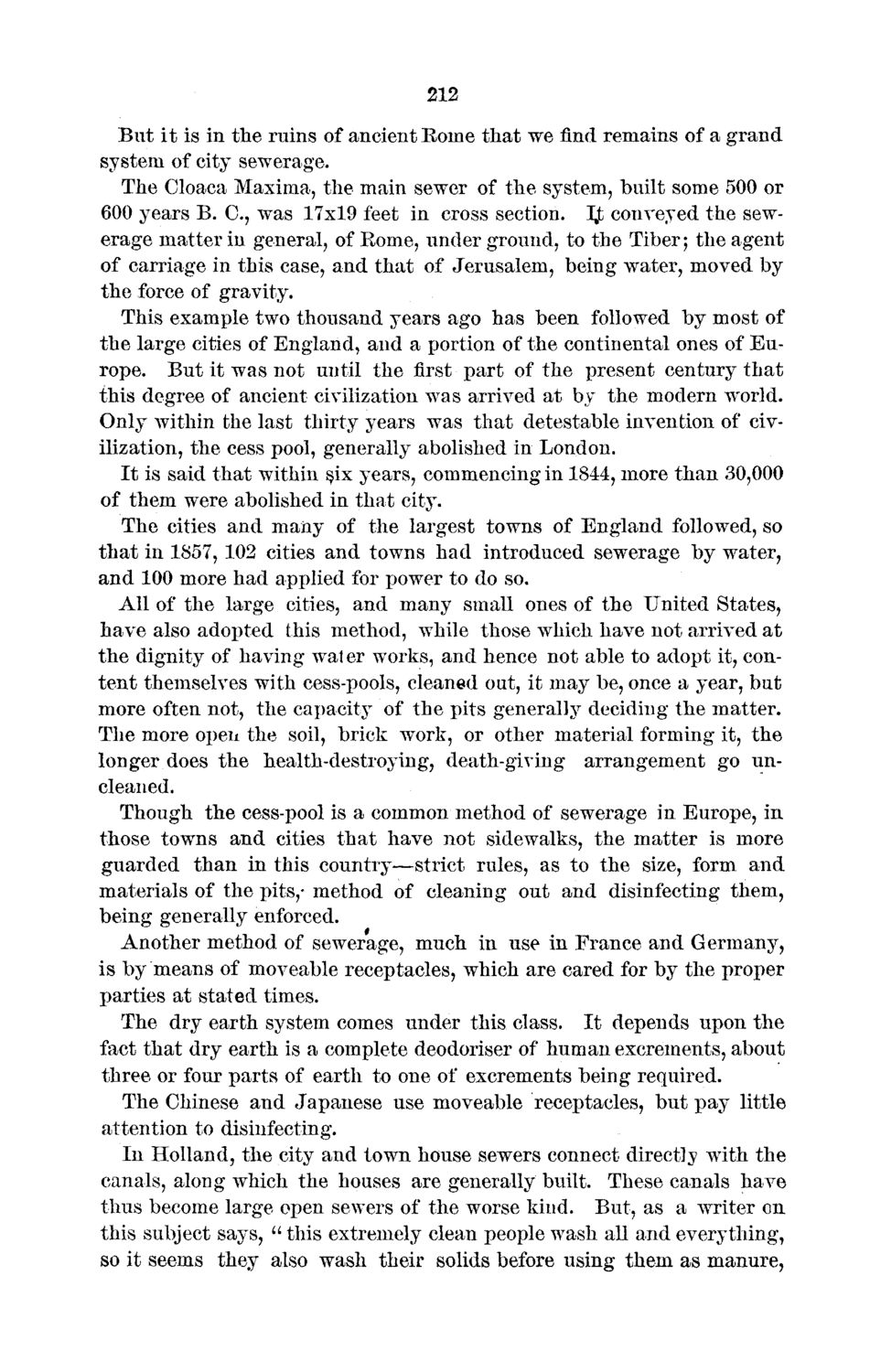| |
| |
Caption: Board of Trustees Minutes - 1872
This is a reduced-resolution page image for fast online browsing.

EXTRACTED TEXT FROM PAGE:
212 But it is in the ruins of ancient Eome that we find remains of a grand system of city sewerage. The Cloaca Maxima, the main sewer of the system, built some 500 or 600 years B. 0., was 17x19 feet in cross section. Ijt conveyed the sewerage matter in general, of Borne, under ground, to the Tiber; the agent of carriage in this case, and that of Jerusalem, being water, moved by the force of gravity. This example two thousand years ago has been followed by most of the large cities of England, and a portion of the continental ones of Europe. But it was not until the first part of the present century that this degree of ancient civilization was arrived at by the modern world. Only within the last thirty years was that detestable invention of civilization, the cess pool, generally abolished in London. It is said that within §ix years, commencing in 1844, more than 30,000 of them were abolished in that city. The cities and many of the largest towns of England followed, so that in 1857, 102 cities and towns had introduced sewerage by water, and 100 more had applied for power to do so. All of the large cities, and many small ones of the United States, have also adopted this method, while those which have not arrived at the dignity of having wal er works, and hence not able to adopt it, content themselves with cess-pools, cleaned out, it may be, once a year, but more often not, the capacity of the pits generally deciding the matter. The more open the soil, brick work, or other material forming it, the longer does the health-destroying, death-giving arrangement go uncleaned. Though the cess-pool is a common method of sewerage in Europe, in those towns and cities that have not sidewalks, the matter is more guarded than in this country—strict rules, as to the size, form and materials of the pits,* method of cleaning out and disinfecting them, being generally enforced. Another method of sewerage, much in use in France and Germany, is by means of moveable receptacles, which are cared for by the proper parties at stated times. The dry earth system comes under this class. It depends upon the fact that dry earth is a complete deodoriser of human excrements, about three or four parts of earth to one of excrements being required. The Chinese and Japanese use moveable receptacles, but pay little attention to disinfecting. In Holland, the city and town house sewers connect directly with the canals, along which the houses are generally built. These canals have thus become large open sewers of the worse kind. But, as a writer en this subject says, " this extremely clean people wash all and everything, so it seems they also wash their solids before using them as manure,
| |